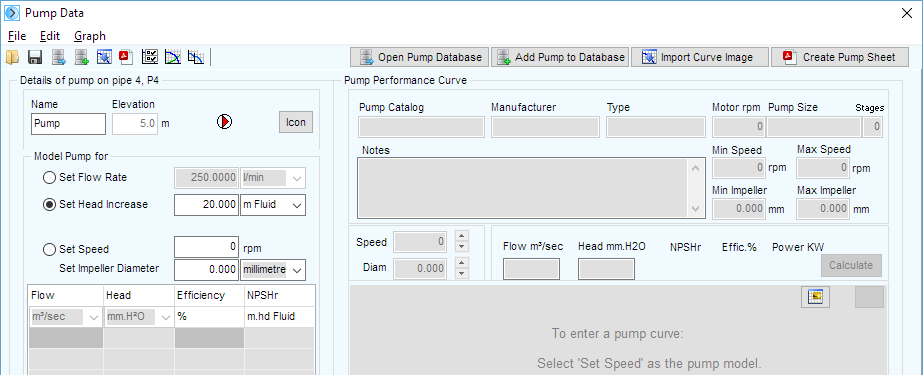Adding a Fixed Head Increase Pump
If the performance curve for a pump is not available, the analysis of the pipeline system can be carried out using a fixed value for the pump head / pressure rise to be added by the pump.
This pump type is used to specify the additional increase in head (pressure) that a pump will add in to the system. When the system is solved, the flow produced by the pump will be calculated.
When difficulties are experienced in solving a system, perhaps because a chosen pump is not capable of producing the required flow, it can be useful to solve the system using a fixed head pump that adds a high pressure. The fixed head added by the pump can then be progressively reduced, and the system re-solved, to identify the minimum pressure needed to produce the required flow through the system
Using a fixed head pump as described above can often help identify bottlenecks in the system, where perhaps design changes can be made to achieve the required flow rate with a lower pump head
To model a fixed head / pressure rise pump condition:
- Add a pump to a pipe (as described in the previous Adding a Pump section).
- The pump is positioned at the start of the pipe, immediately after any fittings that are included at the start of the pipe. The Elevation field is automatically populated and set to be the same as the elevation of the node at the start of the pipe. Click the Icon button to select the pump symbol you want displayed on the pipe system drawing.
- Type the pump’s name in the Name field.
- Click the Set Head Increase radio button.
- Select the head / pressure units and enter the head / pressure to be added.
- Click the Save button to save the pump head / pressure data to the pipe.

Figure 73 Fixed Head / Pressure Pump
The system can now be solved, using the fixed head / pressure added by the pump.

